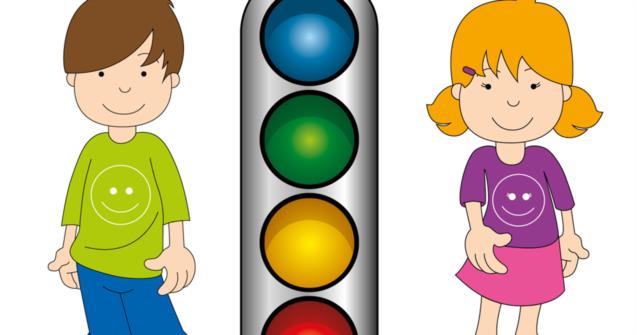
An adapted light system
Children who have difficulties affecting their attention span and those who are hyperactive can represent a challenge for parents and early childhood educators. Understanding and integrating rules can be quite complex for these children. Attention deficit disorders are rarely diagnosed before kindergarten. Nonetheless, you may have to deal with a variety of manifestations. For example, you may see children who pay little or no attention to detail, who do not seem to listen when you speak to them, have trouble sitting quietly, can be overexcited and impulsive, or simply don't follow rules. Getting children with one or more of these characteristics to follow your daily routine can represent an enormous challenge, especially if you aren't properly prepared.
When working with children who have special needs, you must be rigorous in terms of discipline. Your rules must be well-established and your interventions must be consistent. We have adapted a light system originally designed to help children understand daycare rules to help simplify your discipline efforts. The light system is clear and simple for both adults and children to use. It makes limits easy to understand. Children therefore know exactly what to expect. Above all, the light system represents a tangible tool. Visual aids are especially important for children who have special needs.
To use the light system, you will need:
- A picture of each child.
- A printed copy of the light system (Open light system with blue section)
- A laminator to protect the document
How must you use the system?
The light system is much like the 1-2-3 method that you may already be familiar with. It gives children two chances to correct their behaviour before a consequence is applied.
Green light: Tell the child what you expect him to do. Give him his first warning if his behavior is inadequate and place his picture on the green light.
Yellow light: Tell the child what you expect him to do once again. If the inadequate behaviour continues, move the child's picture to the yellow light. Announce the consequence that will be applied if the inadequate behaviour continues.
Red light: If the inadequate behaviour persists, move the child's picture to the red light and apply the consequence you previously announced.
We have also included a blue section. Use it to encourage positive behaviour. Too often, we forget to reinforce appropriate behaviour when dealing with more challenging children. Our attention is unfortunately turned mainly towards negative behaviour. Our interventions therefore focus on the negative. I suggest identifying a variety of positive behaviours with your group. Whenever you notice that a child has adopted one of these positive behaviours, display his picture in the blue section and congratulate him.
Letting children know that you are also there to positively reinforce their good behaviour is very important. Many children who have special needs have poor self-esteem. It is therefore extremely important that you aim to find balance between your positive and more coercive interventions.
Maude Dubé, Specialized educator

 Home
Home Theme activities
Theme activities
 Babies and toddlers
Babies and toddlers
 Arts and crafts
Arts and crafts
 Science
Science
 Creative recipes
Creative recipes
 Tips and tricks
Tips and tricks
 Special needs
Special needs
 Extra activities
Extra activities
 Educ-TV
Educ-TV
 Newsletter
Newsletter  Online store
Online store Educatall club
Educatall club

